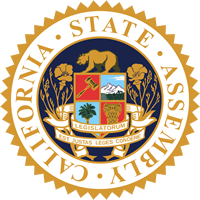SACRAMENTO–Yesterday, Assemblymember Jim Wood (D-Santa Rosa) introduced AB 41, a bill that will improve California’s “Dig Once” policy and expedite the deployment of broadband infrastructure.
“The lack of broadband availability has always been a serious problem but never has it revealed itself as so critical as we face the many challenges of the COVID-19 pandemic,” said Wood. “There are many areas of the state that do not have access to the internet at all and many that have substandard connections. We need to connect children to schools and libraries, hospitals and clinics with our health care workforce and ensure access for people in our low-income and disabled communities.”
“Dig Once” is a policy used by many states that minimizes the number and scale of excavations when installing telecommunications infrastructure. The two main benefits are lower costs of infrastructure deployment when completed in conjunction with other infrastructure improvements, and promoting integration of broadband infrastructure as part of local and regional economic development initiatives.
In 2016, AB 1549, authored by Wood and signed into law, required the Department of Transportation to notify companies working on broadband deployment of Department-led highway construction projects and authorized those companies to coordinate with the Department on conduit installation.
“There are many ways to approach the challenges we face in developing a broadband infrastructure that supports the needs of all Californians,” said Wood. “One way is to take a look at already existing Department guidelines that may require us to address some steps they have taken that may not be facilitating installation of conduit in the most effective way. I look forward to working with the Department and stakeholders to develop legislation that improves California’s “Dig Once” policy and expedites the deployment of broadband infrastructure in communities that are currently unserved and underserved.”
# # #

